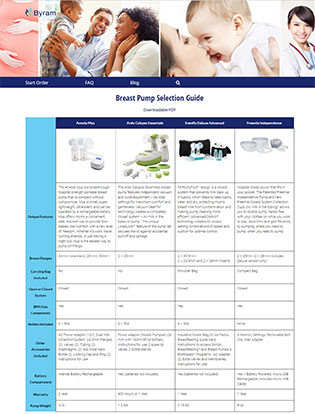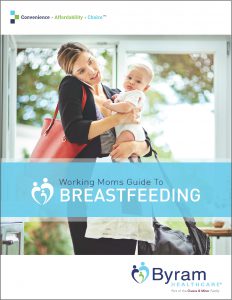What is Umbilical Cord Blood Banking?
In the months leading up to your delivery, there are plenty of fun and important choices you need to make. You and your partner will consider baby names, birthing plans, and parenting styles. However, there's one consideration that you may not have thought of—umbilical cord blood banking. While it's gained some attention recently, some parents are still unsure whether it's worth doing. Here, we'll go over what you need to know about cord blood banking and how to determine whether it's the right choice for your family.
What is Cord Blood Banking?
Cord blood banking involves collecting and storing blood from a newborn's umbilical cord and placenta after birth. This blood contains hematopoietic stem cells, which can develop into various types of blood and immune system cells. These stem cells can potentially treat multiple medical conditions, including certain cancers, blood disorders, and immune deficiencies. It's similar to how stem cells in bone marrow transplants can be used.
How is Cord Blood Collected?
Collecting cord blood does not harm your baby in any way, nor does it cause any pain. Cord blood is collected by removing it directly from the umbilical cord after being cut. About 40 milliliters of blood is typically collected using a small needle, and the blood is then sealed in a bag and sent directly to a lab or the cord blood bank for the necessary testing and storage.
Different Ways Cord Blood Can Be Used
The cells in cord blood contain a dense amount of stem cells, which can be used to treat several conditions. Stem cells have been instrumental in saving lives from cancer and immune disorders. Plus, stem cells in cord blood are about 10 times more concentrated than bone marrow, which is promising for those in need. Since the sample is taken immediately following childbirth, in situations where infections are closely monitored, there is a very low chance of stem cells in cord blood carrying infectious diseases. They're also not rejected as often as adult stem cells when used in transplants.
When the sample is viable, a cord blood transplant can be used in several ways. Some of these include:
1. Treating Blood Disorders and Cancers
Cord blood stem cells are commonly used to treat over 80 diseases, particularly blood-related conditions and certain types of cancers. These include:
- Leukemia
- Lymphomas
- Aplastic anemia
- Sickle cell anemia
- Thalassemia
In these cases, stem cell transplants help replace diseased or damaged bone marrow, allowing the body to produce healthy blood cells.
2. Immune System Disorders
Cord blood stem cells can rebuild the immune system in patients with immune deficiencies or disorders, such as:
- Severe Combined Immunodeficiency (SCID)
- Wiskott-Aldrich Syndrome
- Krabbe Disease
3. Metabolic Disorders
Certain inherited metabolic disorders can also be treated using cord blood stem cells. These conditions involve missing or malfunctioning enzymes that are crucial for normal metabolism, such as:
- Hurler Syndrome
- Hunter Syndrome
- Adrenoleukodystrophy
4. Regenerative Medicine and Emerging Therapies
Cord blood is being explored in clinical trials for its potential in regenerative medicine, which focuses on repairing or regenerating damaged tissues and organs. Some promising areas include:
- The potential for cord blood to help improve motor function in children with cerebral palsy.
- Early research suggests cord blood may help with behavioral and communication improvements caused by autism spectrum disorders.
- Clinical trials are exploring whether cord blood stem cells can help regenerate insulin-producing cells in the pancreas, which could be used to treat type 1 diabetes.
- Research is ongoing to determine if cord blood can aid neurological recovery after a stroke or brain injury.
How and Where Do You Store Cord Blood?
Stem cells from cord blood require careful handling and specific environmental conditions to ensure their survival and viability for future use. However, many experts agree that the blood cells typically are no longer viable after 15 years, so careful organization of cord blood donations is essential.
Cord blood stem cells are mixed with cryoprotectants and stored in liquid nitrogen at extremely low temperatures, typically -196 °C (-320 °F). This ultra-cold environment halts all biological activity, preserving the cells in a dormant state. To reach these temperatures, a controlled-rate freezing process is used (this reduces the risk of damaging the cells as they freeze). Stem cells are stored in sterile, airtight cryo-bags or vials to prevent contamination. These containers are carefully sealed and labeled to ensure traceability and avoid exposure to environmental elements.
The two ways cord blood can be stored are in public or private banks.
- Public Cord Blood Banks—Public cord blood banks store donated cord blood, making it available for transplant patients or research purposes. However, it's not exclusively kept for your family and is instead available for anyone who needs it. This benefits a larger community, as it increases the chances of finding matches for those in need.
- Private Cord Blood Banks — Private banks store cord blood exclusively for a family’s future use. It's generally quite expensive and only recommended if there is a known family medical history that could benefit from stem cell treatment.
When stem cells are needed for transplantation, blood stored in banks must be thawed carefully to maintain viability. Rapid thawing in a warm water bath, followed by removing cryoprotectants, is typically performed under controlled conditions.
Is Umbilical Cord Blood Banking Right for You?
The decision to store cord blood stem cells in a public or private bank is entirely personal, but some things must be considered. First, while it can provide peace of mind and reassurance for potential future issues, a few studies show that cord blood is rarely used. In fact, one study found that the chance a child would use his or her own cord blood is minimal—a 1 in 400 to 1 in 200,000 chance. Although this was from 2011, and more people today may be more likely to consider this approach, the usage remains small. Of nearly 4,700 banked units in Canada, only 86 have been used—less than 2%.
Moreover, it is essential to understand how cord blood can be used. In some situations, it's not viable—especially if the individual develops a disease caused by a genetic mutation. Conditions caused by a genetic mutation mean the mutation will also be present in the stem cells, so using the collected cord blood wouldn't help.
The American College of Obstetricians and Gynecologists, along with the American Academy of Pediatrics, don't recommend routine cord blood storage. The only time it's recommended to store cord blood in a private bank is when a sibling has a medical condition that may benefit from a family member's stem cells. This includes conditions such as:
- Sickle cell anemia
- Leukemia
- Hodgkin's Lymphoma
- Non-Hodgkin's Lymphoma
- Aplastic anemia
- Immune deficiencies
- Thalassemia
- Krabbe's disease
- Other rare diseases
Unfortunately, a family member, even a brother or sister, isn't always a perfect match. This means that even with the blood bank, many individuals have to look outside their family to find a match for a transplant.
There are also considerations regarding annual storage fees between the public and private sectors. If you choose to donate cord blood to a public bank, it's free. However, public banks allow open access for anyone who needs cord blood collection for a transplant or research. This means that you're not guaranteed to have access to your own cord blood in the future. Still, donating to a public bank can benefit others and ensure strict FDA regulations are followed.
The price of using a private blood bank can be substantial, and (in some situations) the quality may not be as controlled as that of public options. According to the AAP, you can expect to pay between $1,350 and $2,350 for collecting, testing, and registering your baby's cord blood and an additional $100 to $175 annually for maintenance and storage.
Ultimately, banking your baby's cord blood and choosing between private and public storage are personal choices. If you’re interested, talk to your doctor about the pros and cons and whether it's a good decision for your family.
Regardless of your decision, you can prepare for the postpartum period by ordering an insurance-covered breast pump from Byram Healthcare. Browse our breast pump comparison chart and start the ordering process today.
.png?la=en&h=438&w=1063&hash=6A6D1DE0844BE1AD5CA9873A83636D4F)




